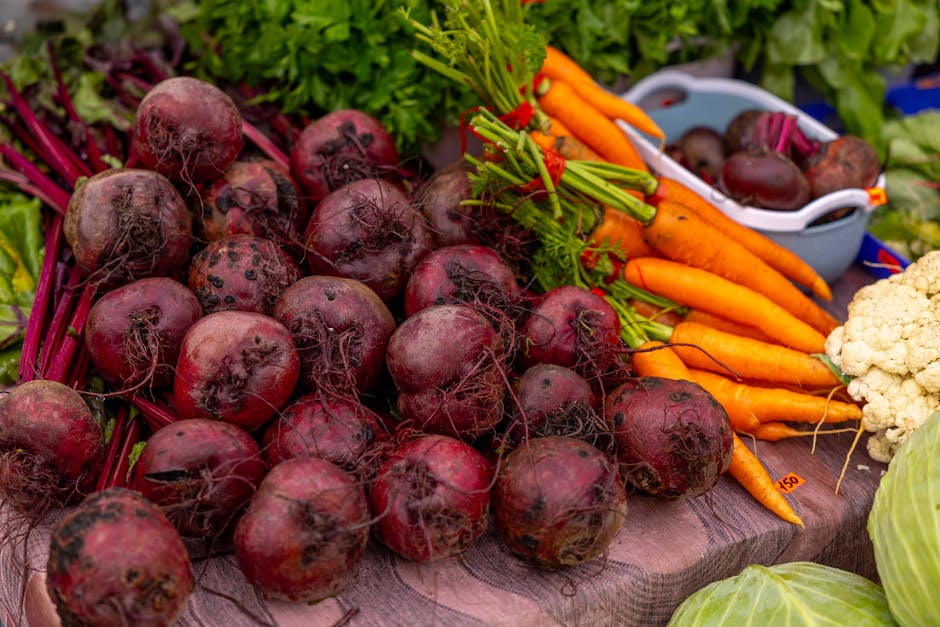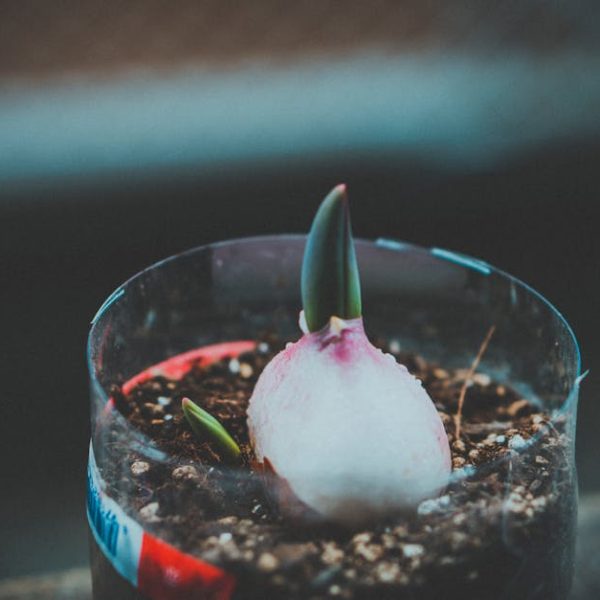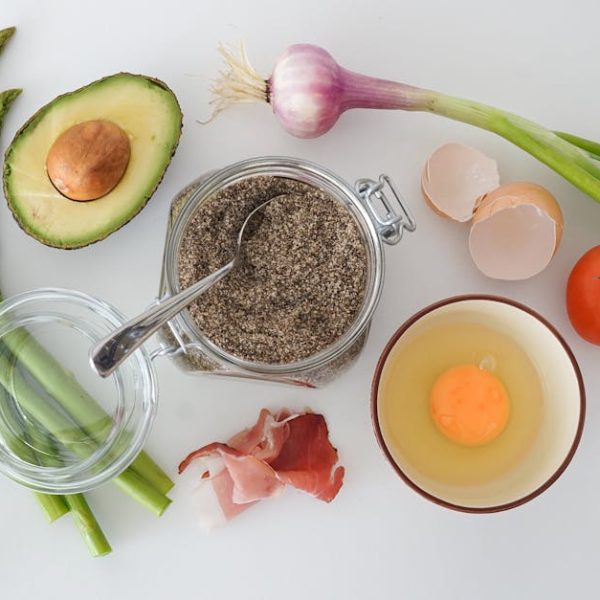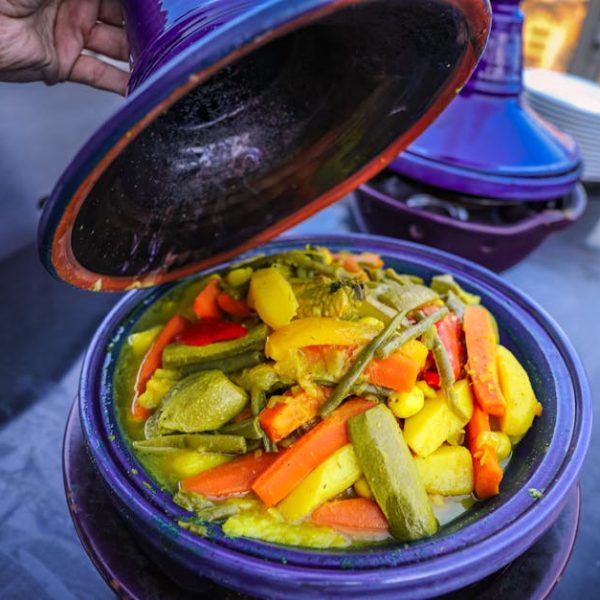Just harvested a bunch of beets from your kitchen garden or scored a great deal at the farmer’s market? Either way, these flavorful root veggies can add a punch of nutrition to your meals. Their delicious, earthy taste makes them versatile for both sweet and savory dishes. However, maintaining the freshness and nutritional value of beets can be challenging as it depends on the right storage methods. Let’s delve into four effective tactics that will help you store beets more efficiently and sustainably, enabling you to savor their robust flavor for longer.
Storing Whole Beets for Longevity
Whole beets, when stored correctly, can remain fresh for about 2-4 weeks. A common mistake that accelerates the deterioration process is leaving the green leafy tops on the beetroot. By cutting off the greens and leaving about an inch of stem on the beetroot, you can prevent moisture loss and keep the root fresh for longer. Remember, never wash the beets before storing – a bit of dirt can extend their shelf life.
*Checklist for storing whole beets:*
- Cut off the green tops, leaving an inch or so of stem on the beetroot.
- Do not wash the beets.
- Store in a perforated plastic bag.
- Keep them in the coolest part of your fridge.
Pro-tip: Storing the beets in a salad drawer or a crisper in the refrigerator helps maintain humidity levels, thereby extending their freshness.
Freezing Beets for extended Preservation
If the beet harvest overwhelms your meal plans, freezing can be a lifesaver. It involves cleaning the beets, removing their tops, boiling them until tender, peeling, slicing or dicing, and packing them into freezer-safe bags or containers. It might sound time-consuming, but this ensures you have ready-to-use beets for up to a year.
Step-by-step guide to freezing beets:
1. Wash the beets thoroughly.
2. Remove beet tops, leaving about an inch of stem.
3. Blanch the beets in boiling water until they’re tender.
4. Drain and plunge into cold water to halt the cooking process.
5. Once cooled, peel the beets. Slice or dice as you prefer.
6. Pack the sliced or diced beets into freezer-safe bags or containers.
7. Freeze!
Though freezing keeps your beets fresh longer, it changes their texture, making them softer, which is a considerable factor depending on your beet preparation plans.
Next, we’ll explore the advantages of using zip-lock bags and vacuum sealing for beet storage.
Using Zip-lock Bags and Vacuum Sealing for Beet Storage
When it comes to preserving the freshness of your beets, zip-lock bags or vacuum sealing can be game-changers. The basic idea behind these methods is to exclude oxygen, which slows down the process of decay. By sealing them tightly, you prevent air from reaching the beets, maintaining their quality and nutritional content longer.
Best Practices for using zip-lock bags and vacuum sealing:
- Remove as much air as possible before sealing the bag.
- Check the seal to make sure it is airtight.
- Don’t overload the bag; filling it up to 3/4 should be good enough.
- Label the bags with the storage date.
Pro-tip: It’s advisable to vacuum seal the beets in manageable portions that you’re likely to use in a single meal. This way, you don’t have to defrost the entire package each time.
Preserving Beets Through Pickling
Finally, let’s talk about pickling. This old-fashioned method not only increases the shelf life of beets but also gives them a deliciously tangy flavor. When pickling, you prepare the beets as you would for cooking, then submerge them in a pickling solution, usually made of vinegar, sugar, and spices. This is sealed in canning jars and processed in a boiling water bath.
A brief comparison of pickled beets vs. fresh beets:
| Pickled Beets | Fresh Beets |
|---|---|
| Tangy and sweet flavor | Sweet and earthy flavor |
| Softer texture | Firm yet tender texture when cooked |
| Great for salads, sandwiches, or as a side dish | Suitable for roasting, boiling, baking, juicing, and more |
Best Practices for pickling beets:
- Always sterilize your jars before use.
- Use both vinegar and water in the pickling solution.
- Seal the jars properly after filling.
Pro-tip: Don’t throw away the pickled beet juice leftover in the jar, it adds a flavor boost to dressings and salads.
In conclusion, the method you choose to extend the freshness of your beets greatly depends on your needs and plans for the beets. Always start with the freshest beets for optimal results, and don’t be afraid to experiment with different storage methods. Remember, a beet saved is a beet earned! Happy beet keeping!
Key Takeaway:
- Cutting off the greens and storing beets in a cool place can help enhance the longevity of whole beets.
- Freezing is beneficial for extended preservation, but may alter the texture of the beets.
- Vacuum sealing beets in zip-lock bags removes oxygen that contributes to decaying, thereby retaining quality.
- Pickling, besides preserving beets, gives them a tangy flavor – an added bonus for many dishes.
Storing beets need not be as daunting as it sounds. The use of these smart and easy methods will ensure your beets maintain their robust flavor and nutritional value over time, allowing you to enjoy them in various dishes at your convenience. Do experiment and find what suits your needs best.
FAQs
Q: Can I store the cut-off green tops for later use?
A: Absolutely! The green tops are rich in nutrients and can be stored separately in a perforated plastic bag in the fridge for use within a few days.
Q: Do frozen beets retain all their nutritional content?
A: Yes, freezing does not significantly affect the nutritional content of beets, making it a viable option for preserving them for longer periods.
Q: Can vacuum-sealed beets be stored outside the refrigerator?
A: For optimal preservation, it is best to store vacuum-sealed beets in the fridge or a cool, dark place.
Q: How long can pickled beets be stored?
A: Properly canned and stored, pickled beets can last for up to a year. Once opened, they should be refrigerated and used within a few weeks.
Q: Are there any other methods to preserve beets apart from the mentioned ones?
A: Besides these techniques, you could also try drying or dehydrating beets. However, these methods may change the texture and taste of the beets.
Help spread the word on these smart beet preservation tips by sharing this article. Be sure to check out other similar posts on our website. Happy beet keeping!






